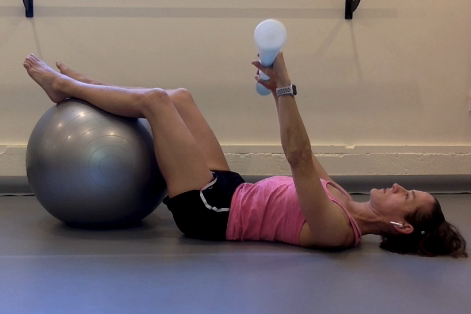The Restful Pelvis
Rest. Relax. Take a deep breath. Soften your pelvis. Soften your throat. These are common statements or even commands we hear during mindful movement practices like yoga and meditation. In this day and age of go go go, we are purposely trying to relax and quiet our bodies and minds. But why is it so difficult?
For many, the answer is related to pain. It can be especially difficult to relax and restore when pain is present. It is our body’s natural tendency to stay on alert and protect itself when there is pain. This is especially true with chronic pelvic pain and pelvic floor dysfunction.
The pelvic floor is a group of muscles within the pelvis that support the pelvic organs, maintain continence, stabilize the pelvic bones and hips, enhance sexual function and promote vascular exchange from the lower legs to the heart. The pelvic floor is a fundamental part of the core, as it intrinsically stabilizes the trunk and pelvis throughout the day.
Photo on Unsplash
Both men and women rely on the pelvic floor musculature to support daily eliminations like urination and defecation, enjoy intimacy, go for a run, and for women specifically, give birth. In many cultures and energy practices, the pelvis is considered a place of life energy, responsible for grounding the body to the life force energy and rejuvenating a sense of overall well-being.
Like any other skeletal muscle, the pelvic floor needs to appropriately contract and then lengthen - or relax - to meet the demands of the activity at hand. Finding a way to “relax” is important for chronic pain management and relieving pelvic floor tension. Key to this is the brain body connection.
Get Centered in the Central Nervous System
If we dive into the anatomy of the central nervous system, we can get a little lost in the complexity of the integrated systems that allow us to move freely and have an understanding of our world around us every day.
Briefly, the central nervous system (CNS), including the brain and spinal cord, collect and assess data and input from the peripheral nervous system. The peripheral nervous system (PNS) includes the motor and sensory information from the arms, legs, and all five senses. Via the PNS, sensory input about pain, temperature, and muscle tension is sent to the brain (CNS). The output is a change in motor control to the viscera including autonomic nervous system (ANS) and the skeletal muscle.
It is in the autonomic nervous system, where the brain unconsciously regulates vital functions such as breathing, heart rate, digestion, daily eliminations (yes, urination and bowel movements), and sexual desire. The ANS has three branches; the sympathetic nervous system, the parasympathetic nervous system and the enteric nervous system.
The sympathetic nervous system has long been considered as the “fight or flight or freeze” response, while the parasympathetic nervous system considered more “rest and digest”. Modern research describes the sympathetic system to be more of a "quick response mobilizing system" and the parasympathetic as a "more slowly activated dampening system". In many cases, these systems have "opposite" actions where one system activates a physiological response and the other inhibits it.
But which of these responses will we have in any situation? That is determined with input from the amygdala and hippocampus, acting as a command center for the “go” or “no-go” of sympathetic vs parasympathetic drive. When chronic stress or pain is present, the amygdala sounds the alarm and activates the sympathetic nervous system increasing the adrenal glands function. The heart beats faster, moving more blood volume to the heart and skeletal muscle in order to prepare to run or fight. This increases breathing rate, pulse and blood pressure.
“Prolonged periods of high stress or persistent pain can change neuroplasticity and function of multiple systems in the body.”
After this initial reaction, the hypothalamus activates additional pituitary and adrenal functions keeping the brain and body on high alert until the threat or pain is no longer considered as dangerous. Prolonged periods of high stress or persistent pain affects the body overall. Increased blood pressure, increased hunger, and changes in metabolic rate can change neuroplasticity and function of multiple systems in the body. We are a complex set of systems regulated with sensory input and output.
Pacifying the Pelvis
Causes of pelvic pain range from traumatic injury including pelvic fractures, birth injury, chronic stress, visceral disease, physical and emotional trauma, and hormonal imbalances, to name a few. This can make pelvic pain difficult to address - similar to other chronic pain like FMS, CRPS and chronic low back pain - as many systems are involved.
Many times meditation and deep breathing are prescribed to address pain and to minimize tension or a protective posture in the pelvis or body. However, because pain challenges multiple systems of the body, addressing the CNS can ultimately have more positive affect. To start, it's important to understand that we need parasympathetic brakes just as much as sympathetic accelerators to keep our body’s humming along happily. One way to find the brakes is by addressing the cranial nerves.
The cranial nerves are a group of nerves closest to the brain which includes the vagus nerve. There is a lot of research about the vagus nerve and its relation to the sensory system but for today we're going to keep the discussion simple. The cranial nerves that coordinate sensory input from the eyes, the ears and touch all integrate together to give the brain input to help decide whether to hit the accelerator or the brakes.
Physiological Quieting
Many times when we are dealing with chronic pain, including pelvic pain, the sympathetic nervous system is in overdrive with the accelerator on. The sympathetic nervous system continues to receive input from muscle tension, nerves, our emotions related to pain, and previous experiences related to the pain including guarding or neglecting the sensation or pain.
“WAV is a positive primer for the nervous system to help be mindfully focused on the internal sensibility of your body.”
Physiological quieting is used to normalize the autonomic nervous system and elicit a parasympathetic response by tapping into the cranial nerves. I’ve found the WAV is not only a proprioceptive tool for musculoskeletal instability and balance, but a positive primer for the nervous system to help clients be mindfully focused on the internal sensibility of their bodies. The visual, auditory and rhythmical motion of the WAV prepares the body for learning and lends an overall sense of relaxation to the nervous and musculoskeletal systems. Specifically, the WAV gives visual and auditory input to the VII (vestibulocochlear) and III (oculomotor) nerves.
As I have been using the WAV for pelvic floor rehabilitation, I find the sensations of the WAV begin to reflect in my clients. I notice a change in facial muscle tension, slowing of breathing patterns and an overall sense of relaxation. Layering the cranial nerve input with the focus required for moving the WAV and the body through rhythmic motions will encourage the hippocampus and executive function to mediate the accelerators and brakes ultimately affecting the central nervous system and state of relaxation.
Try this cranial quieting movement before any hands on therapy, stretching, core stability or balance activities. It will prepare the mover for more effective brain body learning.
Craniosacral Quieting
Part 1
Begin in supine with the legs supported on a chair, bolster or wedge.
Hold the WAV in an overhand grip above the shoulders.
Begin to tip the WAV, right and left observing the speed of the liquid.
Repeat 5x.
Close your eyes. Continue to tip the WAV and listen to the liquid.
Repeat 5x.
Part 2
Return the WAV to center over your shoulders.
Tip the pelvis forward and backward keeping the WAV quiet with still liquid.
Repeat 5x.
Combine the liquid tipping right and left with the pelvic tilts.
Repeat 5x.
What am I doing?
Using the visual, auditory and rhythmical motion of the WAV to create an overall sense of relaxation in the nervous and musculoskeletal systems.
What am I mindful of?
How fast or slow does the liquid move as you observe with your eyes?
What sound does the liquid make as you move?
Does the repetitive nature of the movement allow you to focus differently?
Does the sound or liquid movement reflect or resonate with the sensations in your body?
Did your breathing pattern change as you moved through the exercise?
Does your grip on the WAV reflect any tension in your body?
Learn more about physiological quieting, chronic pain and pelvic floor dysfunction in the following references:
- Harvard Health Publishing, Understanding the stress response
- Physiopedia, Introduction to Neuoranatomy
- Cleveland Clinic, Pelvic Floor Dysfunction
- Latthe, Pallavi, et al. "Factors predisposing women to chronic pelvic pain: systematic review." Bmj 332.7544 (2006): 749-755.
- Fox, Sarah D., Ellen Flynn, and Rebecca H. Allen. "Mindfulness meditation for women with chronic pelvic pain: a pilot study." The Journal of reproductive medicine 56.3-4 (2011): 158-162.
Want to know more about using the WAV for pelvic floor health and other rehabilitation? Contact us for more information about our sensory-based training approach.




